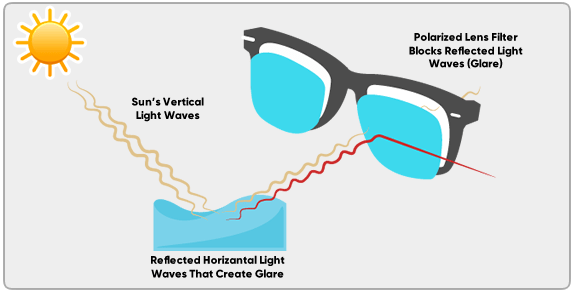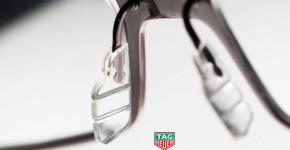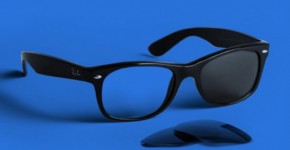Polarized Test: How to Tell If Sunglasses Are Polarized?

Polarized Test: How to Tell If Sunglasses Are Polarized?
You can better understand the edema of a good pair of polarized sunglasses when sailing on a boat or fishing. Polarized sunglasses do more than just add cool style. Because a good pair of polarized sunglasses also provides UV protection. polarizing filters; They reduce glare from light from water, the road or glass.
What Does Polarized Mean?
Polarized sunglasses are treated with a chemical. It can be applied as a coating or embedded in glass. The intended purpose: to provide a significant reduction in glare.
The event that enables us to see things is the reflection of light from those objects. The light reflected from any object allows us to see that object clearly. When the sun is bright, light is reflected from every surface it touches. This is more so on highly reflective surfaces such as open waters. The light is scattered everywhere and makes it difficult for us to see.
The coating on polarized sunglasses is the key factor here. While absorbing horizontal light rays reflected from water or shiny surface; vertical rays can still pass through, but the glare of reflected light is eliminated.
Why Do Polarized Glasses Matter?
The glare reduction caused by polarized lenses reduces eye strain. It also improves your ability to clearly see what’s ahead of you. That’s why polarized lenses are ideal for truckers, boaters, and anglers. When you need to see clearly but are faced with a reflective surface, they are ideal.
Serious eye strain caused by glare can lead to accidents. It’s easy to miss things hidden in glare. It effectively creates a blind spot right in front of you. On calm waters, if the sun is bright enough, you’ll experience a white spot. This can be so big an entire boat can disappear right in front of you.
Also, glare leads to that after burn effect. Even when you turn away
from the light, your eyes need time to adjust. The glare image will be
seared into your vision briefly. That may not be a big deal all the
time. But if you’re trying to land a fish or avoid a boat, it could be
very serious.
Like good quality regular sunglasses, polarized lenses should also reduce UV radiation. UV protection is essential if you spend a lot of time out on the water.
The Danger of UV Radiation
Any time you’re out on the water, you need glasses to protect your eyes. The damage from UV rays can’t be ignored. It does more than just give sunburns. This is especially true for children. Their eyes and skin are more sensitive to UV rays. They absorb more, but the damage won’t be present until later in life. By age 20, you will have already experienced 80% of the UV radiation your body can handle in your lifetime.
UV radiation can lead to cataracts, macular degeneration, even corneal sunburns.
One thing to be on the lookout for is how the lenses you buy offer UV protection. Cheap glasses may say they offer high UV protection, but it’s only the result of a spray on coating. This will come off when you clean the glasses. That will leave you with tinted lenses that offer no protection at all.
How to Tell if Your Sunglasses Are Polarized
Polarized glasses do not look very different from regular sunglasses. That means you may not be able to tell if you have a polarized pair or not. Worse, some lower-quality glasses market themselves as polarized when they are not. That means you need a way to tell the difference. There are a few methods you can use to determine if your sunglasses are polarized.
1. The Single Pair Method
Look at a bright, reflective light source (e.g., glass, water, or polished metal) with your shades on. If the light increases in intensity when you tilt your head sideways to around 60 degrees, you’re wearing polarized sunglasses. If there’s no change in quality, they’re just tinted.
2. The Two Pair Method
Already have a pair of polarized glasses and want to check if your new pair is polarized too? Just hold one pair in front of the other. You should be able to see through both lenses. Now rotate one pair to a right angle. If the lenses blend to black, the secret is out: You’ve got two pairs of polarized shades.
3. Using a Digital Display
Look through your shades at an LED or LCD display, such as a laptop, tablet, cell phone, or GPS. The display will be dim to begin with, but if it goes black when you tilt your head, that’s proof of polarized lenses doing their magic.
4. The Test Card Method
Polarization test cards are another quick way to test sunglasses. Many businesses and websites that sell polarized glasses will also sell these cards. When viewed through true polarized lenses, an image will appear on the card. If you view them with your naked eye or normal sunglasses, they will appear blank.






